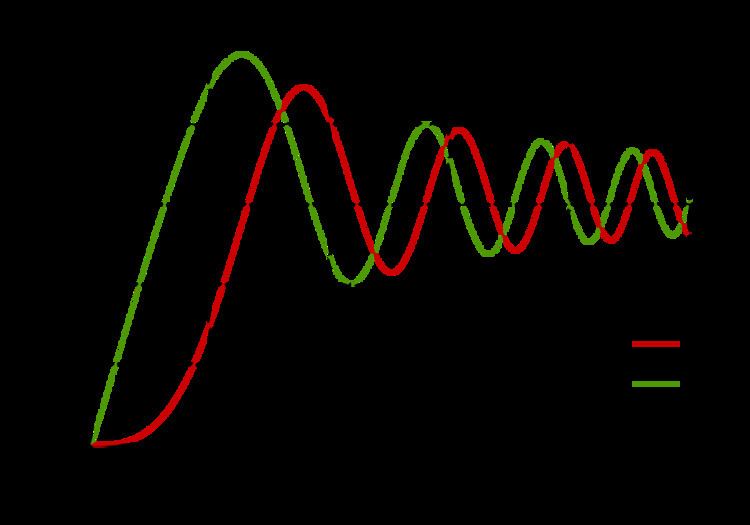 | ||
Fresnel integrals, S(x) and C(x), are two transcendental functions named after Augustin-Jean Fresnel that are used in optics, which are closely related to the error function (erf). They arise in the description of near-field Fresnel diffraction phenomena and are defined through the following integral representations:
Contents
The simultaneous parametric plot of S(x) and C(x) is the Euler spiral (also known as the Cornu spiral or clothoid). Recently, they have been used in the design of highways and other engineering projects.
Definition
The Fresnel integrals admit the following power series expansions that converge for all x:
Some authors, including Abramowitz and Stegun, (eqs 7.3.1 – 7.3.2) use
Euler spiral
The Euler spiral, also known as Cornu spiral or clothoid, is the curve generated by a parametric plot of
From the definitions of Fresnel integrals, the infinitesimals
Thus the length of the spiral measured from the origin can be expressed as
That is, the parameter
And the rate of change of curvature with respect to the curve length is
An Euler spiral has the property that its curvature at any point is proportional to the distance along the spiral, measured from the origin. This property makes it useful as a transition curve in highway and railway engineering.
If a vehicle follows the spiral at unit speed, the parameter
Sections from Euler spirals are commonly incorporated into the shape of roller-coaster loops to make what are known as clothoid loops.
Properties
Limits as x approaches infinity
The integrals defining C(x) and S(x) cannot be evaluated in the closed form in terms of elementary functions, except in special cases. The limits of these functions as x goes to infinity are known:
The limits of C and S as the argument tends to infinity can be found by the methods of complex analysis. This uses the contour integral of the function
around the boundary of the sector-shaped region in the complex plane formed by the positive x-axis, the bisector of the first quadrant y = x with x ≥ 0, and a circular arc of radius R centered at the origin.
As R goes to infinity, the integral along the circular arc tends to 0, the integral along the real axis tends to the half Gaussian integral
Note too that because the integrand is an entire function on the complex plane, its integral along the whole contour is zero. Overall, we must have
where
Using Euler's formula to take real and imaginary parts of
where we have written
Solving this for
Generalization
The integral
is a confluent hypergeometric function and also an incomplete Gamma function
which reduces to Fresnel integrals if real or imaginary parts are taken:
The leading term in the asymptotic expansion is
and therefore
For m = 0, the imaginary part of this equation in particular is
with the left-hand side converging for a > 1 and the right-hand side being its analytical extension to the whole plane less where lie the poles of
The Kummer transformation of the confluent hypergeometric function is
with
Applications
The Fresnel integrals were originally used in the calculation of the electromagnetic field intensity in an environment where light bends around opaque objects. More recently, they have been used in the design of highways and railways, specifically their curvature transition zones, see track transition curve. Another application is roller coasters. Another application is for calculating the transitions on a velodrome track to allow rapid entry to the bends and gradual exit.
